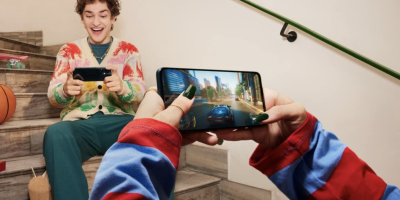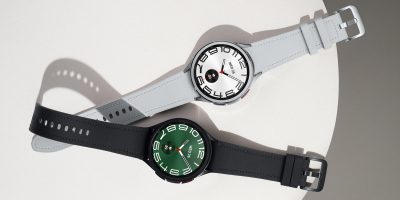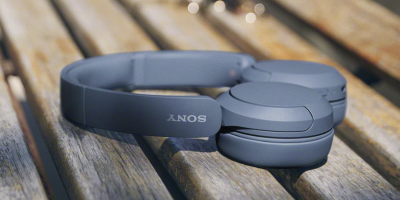With the Pixel 7a on the horizon, it goes without saying that Google’s Pixel line is still alive and well, low sales numbers notwithstanding. The company’s Android phone range still has a bit of ways to go in terms of market dominance, but the A-series in general has built a reputation of being solid midrange smartphones, with decent specs for a reasonable price.
The Pixel 7a does not exist in a vacuum though, and in markets like the United States, it faces stiff competition from several other brands. One good example is Motorola, which has done an impressive feat of climbing back up the sales charts against bigger brands like Apple and Samsung, a task made possible due to widespread market adoption of Motorola’s midrange smartphone offerings, as well as carrier sales.
With that being said, can the Pixel 7a steal the spotlight from Motorola once it makes its debut? Let’s take a look.
The Tale of the Tape

Motorola currently ranks third in US smartphone rankings.
It’s important to note that Motorola currently holds third place in the US as of Q1 2023, with around 4.75% of market share. While this might seem rather small compared to the whopping 56.81% and 29.4% held by Apple and Samsung respectively, it’s still more than twice the 2.1% that Google currently holds.
By comparison Google has outranked LG (which has long since dropped out of the smartphone market), as well as other brands such as OnePlus and Nokia, which have yet to make a dent in the top five rankings. Google has seen some growth as well, with company CEO Sundar Pichai previously stating that the Pixel 7 series phones have been the best-selling Pixel devices so far.
Popularity Contest

While Motorola distributes its own line of high-end premium phones including the Moto Edge and Razr series, a bulk of the company’s market share is due to carrier sales as well as entry-level and midrange devices.
“… a relatively affordable phone from a well-known brand with access to social media and communication apps is enough to meet most needs”
One could say that for most moderate smartphone users, a relatively affordable phone from a well-known brand with access to social media and communication apps is enough to meet most needs, and Motorola definitely fits into that bill. The company’s Moto G and E series phones are great examples of this, going back to 2013 with the launch of the first Moto G phone.
![]()
Meanwhile, Google’s introduction of the Pixel 3a back in 2019 set the stage for the company’s future A-series phones, which serve as Google’s go-to “affordable” handsets, which up until recently have kept their prices well below 500 dollars. Google hasn’t revealed the exact sales figures for the A-series phones, but we can assume that these would count among the best-selling Pixel phones, given their lower cost.
Another element that makes the A-series Pixels popular with fans and enthusiasts is the fact that they offer a majority of Pixel-exclusive features available for consumers, without them needing to spend the same amount as they would on a flagship Pixel phone.
Where the 7a Shines
The Pixel 7 has already appeared in leaked photos.
Popularity aside however, a consideration to be taken with Motorola’s lower-end smartphones is that there are compromises to be made with certain aspects such as camera quality and overall performance, which more often than not go hand-in-hand with a 300 (or sometimes even 400) dollar price point. This then leaves the door open for the Pixel 7a to swoop in, which has an advantage in terms of computational photography, and a relatively faster Tensor chip which outshines the lower-end Qualcomm and MediaTek SoCs on midrange Motorola phones.
“Monthly software updates, access to the latest Android software features, and Google-exclusive functionality give the 7a an edge”
Of course, there are exceptions such as the Moto G Power 2023, which does pack some impressive hardware for $300. But it lacks some refinements when it comes to software – while both are Android phones, Google has gone to great lengths to develop Android in a way that competing manufacturers have yet to tap into. Monthly software updates, access to the latest Android software features, and Google-exclusive functionality give the 7a an edge over Motorola’s offering – specs aren’t everything, as they say.
The Pixel 7a is rumored to come with the same specs as Google’s flagship Pixel 7.
But if we really have to talk about specs, then it should be noted that the Pixel 7a is expected to come with virtually the same hardware features as on the more expensive Pixel 7 flagship, a first for the Pixel A-line. With the exception of the smaller display, the 7a is speculated to feature the same 90Hz refresh rate, same Tensor G2 chipset and RAM, same storage configuration, and same overall design as on its more expensive brethren – it’s basically Google’s 2022 flagship shrunk down. There are even rumors that the 7a’s camera will come with a higher megapixel count than on the 7.
Going back to user experience, one could say that Google’s approach to software and AI features will make the Pixel 7a unique in its own way. It’s not enough to slap a “stock” version of Android on a device with loaded-up specs and call it day, and Google has been mindful of that, adding some much-welcome tweaks and tricks along the way.
Final Thoughts
Of course at this point in time, all of this is mere opinion and speculation, and until we see the Pixel 7a make its official debut, things are bound to change. With that said however, a flagship-level phone with midrange pricing is nothing to be laughed at, and there’s still a chance that the Pixel might be responsible for closing – or even overtaking – the market gap between Google and Motorola, at least in the US.
Additionally, factors such as pricing, product marketing, promos, and expanded user adoption will also need to be taken into consideration, and with the right moves Google could see itself move up the rankings. Maybe not enough to overtake Samsung or Apple, but enough to make Motorola think twice.
How about you? Let us know your thoughts on Motorola and Google in the comments down below!
Note: this article may contain affiliate links that help support our authors and keep the Phandroid servers running.













Comments